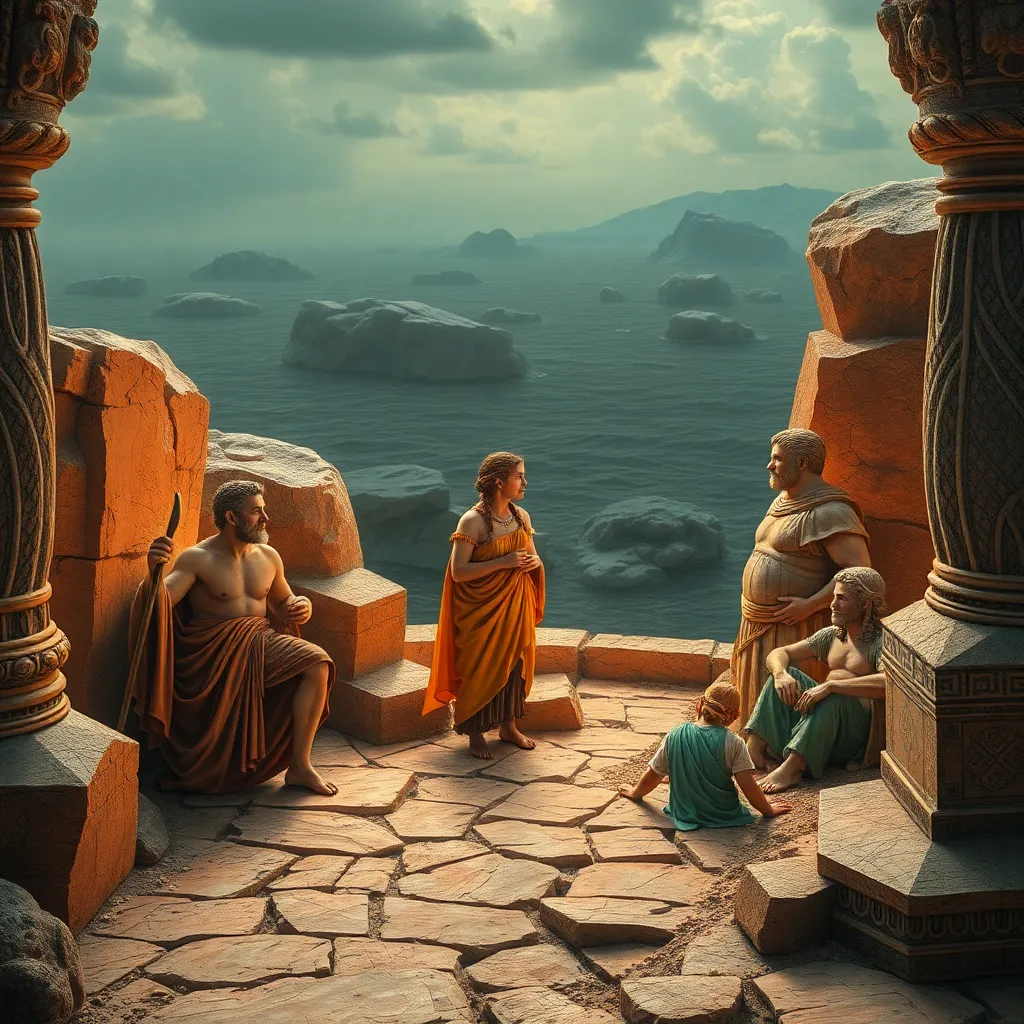The Role of Storytelling in The Odyssey: Narratives Within Narratives
I. Introduction
“The Odyssey,” attributed to the ancient Greek poet Homer, is one of the most celebrated epic poems in Western literature. It narrates the adventures of Odysseus as he struggles to return home after the Trojan War. This epic not only recounts a heroic journey but also reflects the rich tapestry of ancient Greek culture, particularly its deep appreciation for storytelling.
In ancient Greece, storytelling was not merely a means of entertainment; it was a vital component of cultural identity and historical memory. Through oral traditions, stories were passed down through generations, preserving the values, beliefs, and experiences of the people. In “The Odyssey,” the intricate use of narratives within narratives serves to enhance character development, explore profound themes, and amplify the overall impact of the epic.
II. The Structure of The Odyssey
“The Odyssey” employs a unique structural technique known as a framing device. The poem begins in medias res, or in the middle of the action, with Odysseus trapped on the island of Ogygia. Through flashbacks and storytelling, the narrative unfolds, revealing earlier events that led to his current predicament.
Key narratives embedded within the main story include:
- Odysseus’ adventures with the Cyclops and Circe.
- The tales of his encounters with various mythical creatures and gods.
- Peneleope’s loyalty and struggles in Ithaca.
- Telemachus’ journey to find his father.
This technique of storytelling is significant as it allows for multiple perspectives and enhances the complexity of the narrative. It invites the audience to engage with the characters’ experiences on a deeper level, creating a rich backdrop for the exploration of themes and character arcs.
III. The Role of Odysseus as a Storyteller
Odysseus, the central character of the epic, is not only a hero but also a master storyteller. Throughout his journey, he recounts his adventures to various characters, including the Phaeacians, who play a crucial role in facilitating his return home.
His narratives serve several purposes:
- They reveal his cunning and resourcefulness, traits that define his identity as a hero.
- They shape his legacy, allowing him to be remembered not just for his strength but for his intellect and eloquence.
- They impact other characters, influencing their perceptions and actions, especially in the case of the Phaeacians who assist him.
IV. The Function of the Bard and Oral Tradition
Bards held a revered position in ancient Greek society, serving as the custodians of history and culture through their storytelling. In “The Odyssey,” the character of Demodocus, a blind bard, exemplifies this role. He sings of the Trojan War and the exploits of heroes, connecting the past to the present.
The bard’s storytelling influences the plot in several ways:
- It provides context and background, enriching the audience’s understanding of characters and events.
- It reinforces the cultural values of heroism, loyalty, and the consequences of pride.
- It serves as a means of entertainment, engaging the audience and drawing them into the narrative.
The oral tradition not only preserves culture but also allows for the fluidity of stories, enabling them to evolve over time and adapt to the needs of the audience.
V. Thematic Exploration Through Embedded Narratives
The narratives within “The Odyssey” illustrate key themes relevant to human experience. Two prominent themes are:
- The Nature of Heroism: Through Odysseus’ trials, the poem explores what it means to be a hero. His intelligence, resilience, and moral dilemmas highlight the complexity of heroism beyond mere physical strength.
- The Concept of Home and Identity: Odysseus’ longing for home and the struggles of his family underscore the importance of identity and belonging. The various stories reveal how characters navigate their sense of self in the face of adversity.
These embedded narratives deepen the thematic resonance, allowing readers to reflect on their own experiences and the universal nature of the themes presented.
VI. Character Development Through Storytelling
Storytelling significantly impacts character development in “The Odyssey.” Key characters, such as Penelope and Telemachus, are shaped by their narratives.
For instance:
- Penelope: Her cleverness and loyalty are showcased through her own storytelling as she weaves and unweaves her tapestry. Her narrative of waiting and fidelity contrasts with Odysseus’ adventurous tales.
- Telemachus: His journey to find his father represents a coming-of-age narrative. Through his encounters and the stories he hears, he grows from a passive boy into a confident leader.
The interplay between storytelling and character growth reveals the transformative power of narratives, showcasing how experiences and shared stories influence individual identities.
VII. The Influence of Fate and the Gods on Narratives
Divine intervention plays a crucial role in shaping the narratives within “The Odyssey.” The gods, particularly Athena and Poseidon, influence Odysseus’ journey, illustrating the relationship between fate and personal narrative.
Key aspects include:
- Divine Intervention: The gods frequently intervene in human affairs, guiding or obstructing characters based on their whims, which adds layers of complexity to the storytelling.
- Fate vs. Free Will: The tension between predetermined fate and the characters’ choices is a recurring theme, prompting reflections on the nature of human agency.
The gods’ influence underscores the idea that storytelling is not just a human endeavor but is intricately linked to the divine, further enriching the epic’s narrative structure.
VIII. Conclusion
The significance of storytelling in “The Odyssey” cannot be overstated. It serves as a vital vehicle for character development, thematic exploration, and cultural preservation. The intricate narratives within narratives enhance the complexity of the epic, inviting readers to engage with the text on multiple levels.
Ultimately, “The Odyssey” stands as a testament to the enduring power of storytelling. It highlights how narratives shape our understanding of identity, heroism, and the human experience. Through its rich tapestry of tales, the epic continues to resonate with readers, affirming storytelling as a fundamental aspect of our shared humanity.




